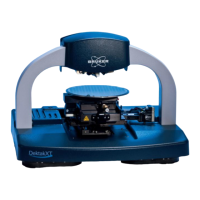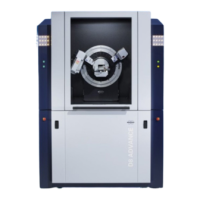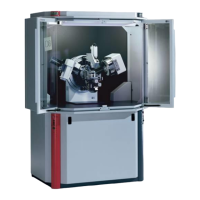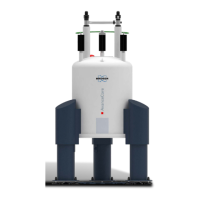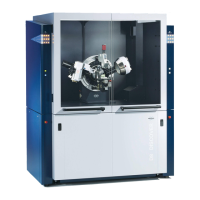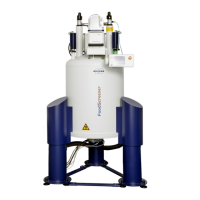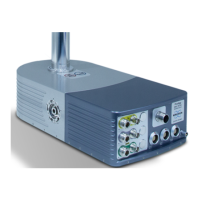User Manual D2 PHASER
DOC-M88-EXX141 V5 – 01.2015 24
microcontroller will perform the start-up checks and resume with normal operation mode if the error
condition is removed.
Radiation protection and leakage levels
X-ray source, diffractometer, sample and other components are completely placed inside a radiation
safety housing with sliding front door (1.5mm steel plate) for user access. The lower part of the
housing is made of 2mm, the upper one of 1.5mm steel plates. A 2mm steel plate which carries the
goniometer separates the X-ray radiation section from the electronics section. X-rays can only be
generated if the lower and upper parts of the housing are put together correctly which is controlled by
two Schmersal safety switches. The sliding front door is controlled in the same way by 2 independent
safety circuits and a safety lock which avoids the opening of the door when X-ray is on. The
Schmersal door lock and safety module is protected with a cover. This cover is protected with one and
the safety switch actuator with two sealed safety screws in order to avoid illegal removal.
The X-ray source (tube) is enclosed by a shielding housing (without radiation safety shutter). X-rays
can only escape through one well defined window. The X-ray beam passes a primary optics housing
which limits the maximum opening angle significantly. Only a well defined beam hits the sample
position or inner housing wall. This primary optics housing is protected with one sealed safety screw in
order to avoid illegal removal. When the user wants to open the front door for sample access he has to
switch off the high voltage (HV) before. After HV-signal state ‘off’ was detected by the safety system,
the mechanical door lock is unlocked and the door is released.
The housing of the X-ray tube is attached to the primary angular arm with one sealed safety screw.
Furthermore the goniometer is attached to the basic carrier plate with one sealed safety screw. This
makes sure that the X-ray source cannot be removed from the angular arm or the goniometer from the
carrier plate, respectively, and deposited to an illegal place within the radiation section. The bottom of
the radiation section is strengthened by a 0.8mm steel plate. Two sealed safety screws protect the
plate against removal.
A safety system guarantees that X-rays cannot escape from inside of the radiation safe housing. Two
independent electrical safety circuits and alarm lamp monitoring circuits provide the interlock system.
The interlocks prevent X-ray generation if safety circuits are not intact. Warning lamps are lighting
when X-rays are on.
The radiation safe housing is checked to be a fully protected device when tested at maximum possible
power of 30kV, 300W with Mo radiation. The maximum dosage at a distance of 10 cm (4 inch) above
the surface of the outside of the radiation safe housing is less than 1Sv/h H*(10) for the configuration
with highest power (300W at 30 kV) in worst case settings (largest opening of primary optics and
strongly isotropic scattering sample or beam direction directly to the wall of the housing).
Radiation safety is always guaranteed independent what type of detector, sample or tube anode target
material (Mo, Cu, Cr, Co at 30kV @ 10mA) is used. Only Siemens tubes of types K FL $$ 2 K # ($$ =
type of anode material, # = wildcard character: C = ID-chip, void = no chip) may be used as X-ray
source for the D2 PHASER.
Resetting the D2 PHASER Safety System
If the Safety System detects any unsafe condition, it will go into error state, which is indicated in the
tools by a “red and white cross” icon. Generation of X-ray is prohibited in this state. Even after a restart
of the D2 PHASER, it will stay in this state to protect the operator. After checking and removing the
error condition, the Safety System needs to be reset to return to normal operation.
Choose the menu Tools / SafetyBoard. Get control over the safety board by clicking the “get control”
icon in the upper left corner (fig. 129). Then click the “reset” icon (fig. 123). A window for your
password will appear: enter the valid password and click the “send” button (fig. 124).
The Safety System will now start the reset procedure which takes approximately 10 seconds. During
this procedure several self tests are performed. If the error condition is no longer present, the Safety
System will return to normal operation, indicated by a “green checkmark” icon (fig. 125).
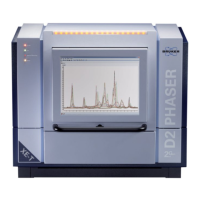
